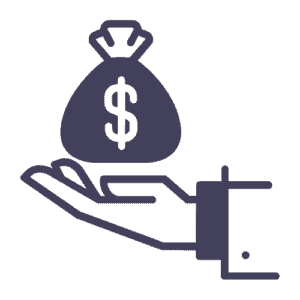
On this page:
- What is Series A Financing?
- When Should You Consider Series A?
- Considerations for Series A
- Finding Series A Investors
- Creating & Setting Up Your Pitch To Series A Investors
- How to Successfully Secure Series A Funding?
- What’s Next? Other Series Funding Rounds
- Conclusion
- Series A Funding FAQs
Once a startup business begins to collect its first few checks and develop some traction, they’re ready for Series A to further their financing. With a strategic business plan, startups can attract new investors and sell them stocks in Series A.
The essential goal of Series A financing is to get funding to help the company turn a profit or further develop its products and services. More often than not, seed startups (i.e., companies who have raised initial capital from friends and family and/or angel investors) have great ideas but haven’t yet been able to monetize their business. With Series A, your business will be able to do just that.
What is Series A Financing?
Series A is a series of funding that requires a successfully launched product or service, established customer base, solid financials, and a scalable business model to raise at least $2 million to help the company turn a profit. This series A round is often the first funding that entails an ownership stake in your company as an investment to give entrepreneurs the needed funds to combat high startup costs and high business risk. In this round, it’s critical to have a strategy for creating a business model that will produce a long-term profit.
The typical Series A round receives between $2 million and $15 million, although this average has risen due to high-tech company valuations. As of 2020, the average amount raised in a Series A is $15.6 million.
When Should You Consider a Series A Funding Round?
 Consider pursuing Series A once your business has developed a track record. At this stage, your company should have a clear idea of the potential market, customers, price point, and delivery method you will execute. You should be an expert on your business and its services and products.
Consider pursuing Series A once your business has developed a track record. At this stage, your company should have a clear idea of the potential market, customers, price point, and delivery method you will execute. You should be an expert on your business and its services and products.
Your business should also have secured cash at this point, whether that’s through sales, cash advances, or securing buyers. Remember that this funding stage happens just after your business has gotten off the ground, not while it’s still on it.
With that said, investors will want to know about your metrics, such as the number of products you have sold thus far and the number of clients your company currently has. It’s important to remember that these numbers don’t have to demonstrate profitability just yet. Series A financing rounds can be attained regardless of whether or not your business has turned a profit.
Many businesses raise quite a bit of money through their Series A rounds. Since investors are willing to cover the cash burn while demand picks up, companies generally do not need to worry too much about losing money.
Considerations for Series A
In this early stage, investors are looking for companies that have great ideas and a sustainable strategy for turning their ideas into a functional, successful business. They want to see just what the company’s abilities are when racking up sales and customers. Through this, investors can trust that investing in the business is worthwhile and that the company has long-term goals with a bright future ahead.
Company Shares With Investors
Series A investments typically help grow the business before diving into the market. Generally, investors will be able to purchase from 10% to 30% of the business. However, the company itself will decide how much it would like to sell to investors during its Series A round.
There are ways to structure the deal so that you, as the founder, don’t need to give up that much equity. Examples of this can be achieved through either common or preferred shares.
Building Credibility & Valuation
At this point, a valuation of your business will be needed. If your company has not yet generated any profit, this may be challenging. However, it is still necessary. The entire investment will be based on the valuation of the company. Investors will need to be well informed on just how much it is worth and how numbers may trend over time. As an entrepreneur, your job here is to understand how much your business is worth, not just how it’s working today but also how it will be functioning in 5 years.
Once you figure out these numbers, you must provide evidence and explain why these metrics are accurate and sustainable. Note that it’s good to have an understanding of and goal amount for your valuation, but in actuality, it will be the investors who determine your valuation.
Finding Series A Investors
 Since raising money can significantly impact the growth of your business, you want to make sure you are choosing investors whose interests and values align with your company founders. Begin searching for potential investors by examining the investment space and shortlisting active investors whose portfolios align with your business and industry. This method will help you connect with Series A investors efficiently.
Since raising money can significantly impact the growth of your business, you want to make sure you are choosing investors whose interests and values align with your company founders. Begin searching for potential investors by examining the investment space and shortlisting active investors whose portfolios align with your business and industry. This method will help you connect with Series A investors efficiently.
There are two primary ways your business can acquire Series A financing:
Venture Capitalists
Generally, venture capital financing is offered to businesses with fast growth rates, such as tech and medical companies. A venture capitalist is usually part of the private sector offering venture capital financing ranging from $2-$100 million. Venture capital firms are more likely to use financial leverage, which means they are able to invest more money into startups.
Angel Investors
Individual angel investors and angel investor groups can also fund your company in Series A. Their investment usually ranges from $25,000-$500,000. Often, angels play a significant role in startups, and they may request a seat on the board of directors of your company.
Creating & Setting Up Your Pitch To Series A Investors
When presenting to Series A investors, it is essential to summarize all necessary information regarding your business: key metrics, forecasts, financial statements, etc. You can most efficiently and effectively display this data through an investment pitch deck.
Here, your primary goal is to describe key points about your business. Be sure to explain just how investing in your company is a great opportunity, with much potential and success in the future. Remember that you are trying to convince these investors to put money into your company, so you need to communicate what they will get out of it. In your investment pitch, center most of your focus on the attractive returns investors will get by financing your business.
How to Successfully Secure Series A Funding
- Be Prepared
- Start As Early As Possible
- Rehearse Your Pitch
- Find Out the Standard Market Practice
The key factors in ensuring your business is Series A ready include having proof of your business model, a demonstrable plan to scale, and a quality founding team.
Don’t underestimate the amount of time raising capital can take. A realistic timeframe is about 7-8 months to raise Series A financing.
Talk to other businesses that have successfully raised Series A funds, and bring their advice into your pitch. Starting by meeting with low-priority investors can help you shape your pitch accordingly, as they often will ask helpful questions and provide critical feedback. After this, then you can approach your top priority investors with a top-notch pitch.
Stay in the loop with common deal term offers for Series A financing. Remember that the market is constantly growing, expanding, and changing.
Once a company has obtained its first investor, it’s usually easier to attract more investors. Often, this stage attracts other investors, such as angel investors. If they decide to take on an investment opportunity at this time, they often have less influence than they would have at the seed funding stage.
What’s Next? Other Series Funding Rounds
 While raising your Series A funds, it is crucial to remember that you are getting ideas and goals for what the capital will do for your business. Remember that you must raise enough capital to achieve these goals and later move to Series B and C.
While raising your Series A funds, it is crucial to remember that you are getting ideas and goals for what the capital will do for your business. Remember that you must raise enough capital to achieve these goals and later move to Series B and C.
Series B Funding
The Series B round of funding takes a business to the next level, beyond the development stage. Investors assist entrepreneurs in reaching that goal by broadening their market presence. Companies with seed and Series A financing have already built strong user bases and shown investors that they are ready for success on a larger scale. The company uses the funds to allow it to meet these business needs to continue to grow.
Series C Funding
Series C funding round is only for businesses that have already proven themselves to be quite successful. These organizations seek additional financing to help them develop new items, enter new markets, or even buy other firms. Investors provide funding to the core of successful companies in Series C rounds in the hopes of obtaining more than twice as much money back. The goal of Series C finance is to expand the company both rapidly and successfully.
For most businesses, the Series C round is usually the last significant funding they will require. Companies that have fallen short of expectations, want to stay private, or need assistance with going public may seek Series D funding and subsequent rounds of funding.
Conclusion
Following initial seed funding, your business’ next step towards success is winning Series A capital. This first round of capital financing is essential to the growth and development of your company. By understanding the intricacies of Series A, you should be able to effectively and efficiently find potential investors who align with your company’s values and interests.
How to Finish Your Series A Business Plan in 1 Day!
Don’t you wish there was a faster, easier way to finish your business plan?
And know it’s in the exact format that Series A investors want?
With Growthink’s Ultimate Business Plan Template you can finish your plan in just 8 hours or less!
Series A Financing FAQs
What is Series A funding used for?
Series A investments are typically used to grow the business before diving into the market. The essential goal is to get startup funding to help the company turn a profit or further develop its products and services. More often than not, seed startups have great ideas but don’t know how to monetize their business. With Series A, your business will be able to do just that.
How much money is included in Series A?
Series A rounds vary greatly in size, but the funding amount is usually between $2 and $15 million. Since failing to secure money early on could considerably delay business efficiency, this is essential for any startup.
How long does Series A funding take to obtain?
A realistic timeframe is about 7-8 months to obtain Series A.
Is Seed Funding the same as Series A?
No. The pre-seed funding or initial seed round may include investments from founders, friends, family, and/or incubators to start the business. Other common seed investors may consist of an angel investor who appreciates riskier startups and expects an equity stake in the company in exchange for their seed money.
Seed funding rounds vary dramatically in terms of the amount of money they provide to a new business. Still, it’s not uncommon for these rounds to produce anywhere from $10,000 up to $2 million in seed capital. For some owners, this seed capital is all they believe they need to get their business up and running; these firms may never pursue Series A investments.
Once seed-funded companies have established their initial clientele and gained some traction in their target market, they may go on to raise additional funding through a Series A round and potential other series funding rounds. The cash amount for Series A is generally $5 million to more than $15 million. Investors in series A may expect to receive up to ten times their money back if everything goes well.
How is Series A different from Series B?
The focus of Series A is to help the startup company survive through the development phase. After this phase, investors have more confidence in the business’s success, and the company has developed a base of customers. Series B funding is then used to grow the company to meet the customer demand and expand the market reach.

